How Long is the Retention Phase?
When we remove your braces, we will begin the retention phase of your treatment. The retention phase lasts for a minimum of 6 months. Your final orthodontic result depends on your retainers, so follow through with the hard work you’ve put in so far. Remember to remove your retainer before brushing, and brush your retainer with soap and cold water before placing it back in your mouth.
Retainers are Forever
Factors Causing Movement in the Retention Phase
The 6-month retention phase allows for a majority of growth and settling to occur so that the teeth and jaws are as stable as possible. However, living tissue is always subject to change from posture, habits, muscle pressure, etc. The eruption of teeth, dental restorations and the aging process all contribute to unwanted tooth movement. Forces exerted by the lips and tongue can also cause subtle changes in tooth positions. Habits such as biting your nails or chewing on pencils put enough pressure on the teeth to move them as well.
Recent studies have indicated that growth occurs in small amounts throughout life. Thus, teeth and jaws can shift at any time in varying degrees, which usually depend on the original malocclusion, the facial muscle structure and the amount of residual growth.
Some believe that un-erupted wisdom teeth are a factor in movement of teeth, but this has not been proven conclusively and tooth shifting has been seen to occur in people with no wisdom teeth. Removal of wisdom teeth or 3rd molars may be recommended due to lack of adequate space in the mouth for normal eruption.
Lifetime Retention
The only way to maintain the tooth alignment indefinitely is with permanent guidance or lifetime retention. This means wearing a removable retainer 4-7 nights per week forever. Removable retainers must be used in both the upper and lower jaws.
HAWLEY RETAINER
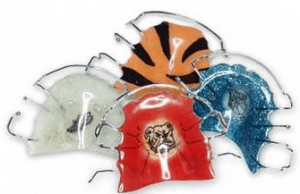
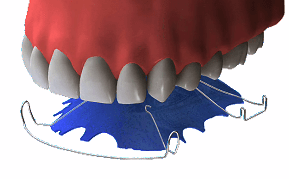
ESSIX RETAINER
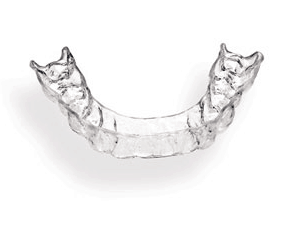
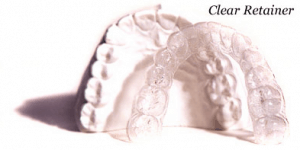
The retainer is a removable appliance designed to maintain the teeth in their corrected positions. It is important that it be worn according to instructions.
IF THIS RETAINER IS NOT WORN AS INSTRUCTED!
This retainer is called a Hawley Retainer and is made of special acrylic material.
Taking Care of Your Retainers in the Retention Phase is Quite Easy
- Use a toothbrush to brush retainer(s) with soap and rinse in cold water. Do not use hot water, as this will cause your retainer(s) to warp. Do NOT use toothpaste as this scratches the material and allows more plaque to adhere to the surface (making it more difficult to clean). Use a denture cleaner if necessary once a month.
- DO NOT wear your retainer while eating. Always put your retainer in the case when not wearing it to avoid losing it, breaking it, or accidentally throwing it in the trash.
- Be careful where you put your retainers, as pets love to chew on them.
- Always bring your retainers to each appointment.
- ADDITIONAL CHARGES will be made for lost or broken retainers. Thee is a charge for a retainer replacement.
- Your retainers are to be worn full time (22hrs/day) until otherwise instructed. If for any reason you find it necessary to stop wearing your retainer, please contact our office. After a period of time, you will be instructed on nighttime wear.
BONDED RETAINER (PERMANENT)
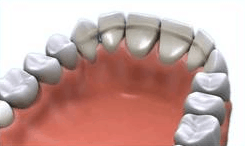
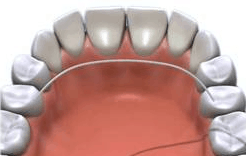
WHY…
A bonded retainer is designed to maintain the position of several teeth. A small wire is glued to the inside of your teeth and is not removable.
Avoid..
Biting into anything hard with your front teeth, such as: hard vegetables, fruits and hard candies. Also, avoid anything sticky, such as Starbursts, caramel apples, and tootsie rolls. These are a few examples of things that can break or loosen your bonded lingual bar. Click here to discover more foods to avoid while wearing braces.
Wear and care…
It is very important to keep you lingual bar clean. When flossing you’ll need to use a floss threader just like you did with your braces. (An assistant will show you how to use one).
If the Bonded retainer becomes loose or breaks…
Call us right away so we can check it. Your teeth may move very quickly if the retainer is broken. There will be an additional charge if we have to repair the retainer or fabricate a new one. Contact our office here.
Patricia J. Panucci DmD, MS • Specialist in Orthodontics For Children and Adults in Southern California
Retention Phase
